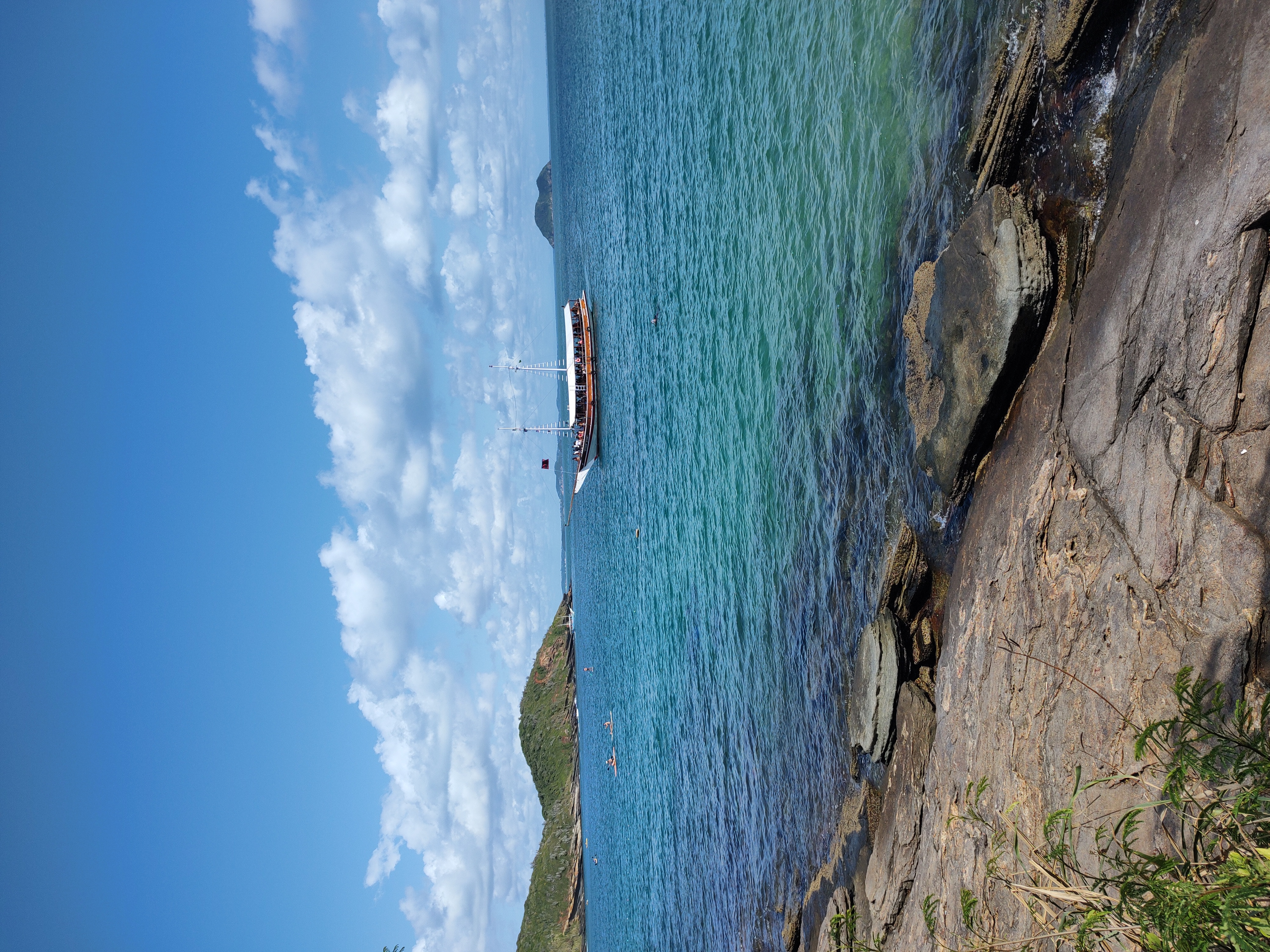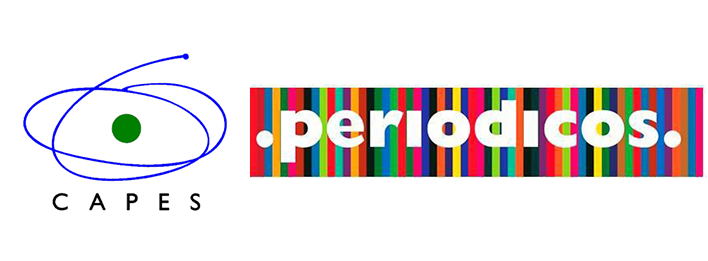Tecnologias Vestíveis no Turismo: Status da Pesquisa e Oportunidades Futuras.
Palavras-chave:
Wearable, TIC, Turismo, Vestível, Revisão de LiteraturaResumo
A tecnologia de informação e comunicação (TIC) vem desempenhando um papel fundamental na atividade turística. Nesse contexto, o surgimento dos weareables (ou em português tecnologia vestível) possibilita novas formas de interação do turista com o espaço físico e sociocultural. Wearables são dispositivos tecnológicos, usados junto ao corpo do usuário, capazes de oferecer novas experiências. Essa tecnologia vem sendo implementada no setor de eventos e em alguns empreendimentos e destinos turísticos. Contudo, observou-se a ausência de um artigo de revisão sobre o assunto. Assim, este artigo tem como objetivo, analisar a produção científica presente nas bases de dados Scopus e Web of Science. Adicionalmente, também foram buscados artigos na base Scielo, a fim de contemplar estudos no contexto brasileiro. Ao total foram encontrados 55 artigos, sendo que 24 possuíam os critérios elegidos para análise. Após examinar estas publicações, foi possível observar a evolução temporal das pesquisas sobre o uso de wearables no turismo. Dentre os dispositivos abordados nos artigos, os mais estudados foram os óculos inteligentes, que podem possuir a funcionalidade da realidade virtual ou da realidade aumentada. Por fim, cabe ressaltar que apesar da relevância do tema, não foram encontrados artigos que estudassem os wearables no contexto brasileiro, indicando assim, a importância de novas pesquisas sobre o tema.
Referências
Acosta, A. G., Andaluz, V. H., Ortiz, J. S., Silva, F. M., Tapia, J. C., Carvajal, C. P., & Quevedo, W. X. (2018). e-Tourism: Governmental planning and management mechanism. Lecture Notes in Computer Science (Including Subseries Lecture Notes in Artificial Intelligence and Lecture Notes in Bioinformatics), 10850 LNCS, 162–170. https://doi.org/10.1007/978-3-319-95270-3_11
Alves, A. (2019, April). O que podemos aprender com o fracasso do Google Glass. EXAME. O que podemos aprender com o fracasso do Google Glass.
Amaro, A. C., & Oliveira, L. (2019). IoT for playful intergenerational learning about cultural heritage: The locus approach. ICT4AWE 2019 - Proceedings of the 5th International Conference on Information and Communication Technologies for Ageing Well and e-Health, 282–288. https://doi.org/10.5220/0007747202820288
Apple. (n.d.). Um relógio como você nunca viu. Retrieved September 30, 2019, from https://www.apple.com/br/watch/
Atembe, R. (2015). The Use of Smart Technology in Tourism: Evidence From Wearable Devices. J. of Tourism and Hospitality Management, 3(6). https://doi.org/10.17265/2328-2169/2015.12.002
Baf, M. R., Debeljuh, A., & Slivar, I. (2018). Family hotels’ use of ICT in entertaining children and recommendations for inclusion of wearable devices. International Journal of Education Economics and Development, 9(2), 124. https://doi.org/10.1504/IJEED.2018.092196
Baktash, A., Nair, V., & Subramonian, H. (2016). Parameters that facilitate tourists’ acceptance in using wearable augmented reality smart glass in Geotourism hotspots. In Heritage, Culture and Society (pp. 469–472). CRC Press. https://doi.org/10.1201/9781315386980-83
Baktash, A., Nair, V., Subramonian, H., & Ragavan, N. A. (2016). Conceptualising a framework to study behavioural intention of tourists of distinct cultures towards wearable augmented reality (AR) application. Heritage, Culture and Society: Research Agenda and Best Practices in the Hospitality and Tourism Industry - Proceedings of the 3rd International Hospitality and Tourism Conference, IHTC 2016 and 2nd International Seminar on Tourism, ISOT 2016, October, 531–536. https://doi.org/10.1201/9781315386980-94
Banco do Brasil. (n.d.). Pulseira Ourocard. Retrieved September 30, 2019, from https://www.bb.com.br/pbb/pagina-inicial/voce/produtos-e-servicos/cartoes/pulseira-ourocard#/
Barbosa, D. P., & Medaglia, J. (2020). Tecnologia digital, turismo e os hábitos de consumo dos viajantes contemporâneos. Marketing & Tourism Review, 4(2). https://doi.org/10.29149/mtr.v4i2.5394
Cavalheiro, Mariana Brandao, Cavalheiro, G. M. do C., Mayer, V. F., & Marques, O. R. B. (2021). Applying patent analytics to understand technological trends of smart tourism destinations. Technology Analysis & Strategic Management, 1–17. https://doi.org/10.1080/09537325.2020.1870950
Cavalheiro, Mariana Brandão, Joia, L. A., & Cavalheiro, G. M. do C. (2019). Towards a Smart Tourism Destination Development Model: Promoting environmental, economic, socio-cultural and political values. Tourism Planning & Development, forthcoming. https://doi.org/10.1080/21568316.2019.1597763
Chen, K. Y., & Yang, S. Y. (2019). A cloud information monitoring and recommendation multi-agent system with friendly interfaces for tourism. Applied Sciences (Switzerland), 9(20). https://doi.org/10.3390/app9204385
Cicek, M. (2015). Wearable Technologies And Its Future Applications. International Journal of Electrical, Electronics and Data Communication, 3(4), 45–50. https://doaj.org/article/20c02d34d6054679874a26a196d13406
Costa, L. V., Veloso, A. I., Arnab, S., Loizou, M., Tomlins, R., & Sukumar, A. (2019). Scaffolding in indoor and outdoor mobility a wearable and mobile application for senior tourism in a Playable City. Iberian Conference on Information Systems and Technologies, CISTI, 2019-June(July). https://doi.org/10.23919/CISTI.2019.8760927
Dertouzos, M. L. (1997). Harvard Journal of Law & Technology. Harvard Journal of Law & Technology, 11(1).
Dinhopl, A., & Gretzel, U. (2016). Conceptualizing tourist videography. Information Technology and Tourism, 15(4), 395–410. https://doi.org/10.1007/s40558-015-0039-7
Donati, L. P. (2004). Computadores vestíveis: convivências de diferentes espacialidades. Conexão: Comunicação e Cultura, Caxias Do Sul, 3(9), 93–102.
Errichiello, L., Micera, R., Atzeni, M., & Del Chiappa, G. (2019). Exploring the implications of wearable virtual reality technology for museum visitors’ experience: A cluster analysis. International Journal of Tourism Research, 21(5), 590–605. https://doi.org/10.1002/jtr.2283
Feitosa, W. R., & Barbosa, R. (2020). Generation Z and technologies on museums – Its influence on perceptions about Quality, Arousal and E-WOM Intentions. Marketing & Tourism Review, 5(2). https://doi.org/10.29149/mtr.v5i2.5766
Garmin. (n.d.). Relógios e monitores de atividade. Retrieved May 15, 2019, from https://buy.garmin.com/ptBR/BR/wearables/relogios-e-monitores-de-atividade/c10001-c10002-p1.html
Gazzarrrini, R. (2014). 5 smartwatches mais baratos que podem ser utilizados com celulares Android. Tecmundo. https://www.tecmundo.com.br/smartwatch/56092-5-smartwatches-baratos-utilizadoscelulares-android.htm
Hanlon, M. (2005). Adidas and Polar introduce the world’s first completely integrated training system. GizMag. http://www.gizmag.com/go/4402
Jacquard. (n.d.). Jacquard by Google. Retrieved May 15, 2019, from https://atap.google.com/jacquard/
Jhajharia, S., Pal, S. K., & Verma, S. (2014). Wearable Computing and Its Applications. International Journal of Computer Science and Information Technologies, 5(4), 5700–5704. https://doi.org/10.1201/9781003000792-4
João Rock. (2019). Pulseira João Rock. https://www.joaorock.com.br/pulseira
Jung, Timothy, Tom Dieck, M. C., Lee, H., & Chung, N. (2020). Relationships among beliefs, attitudes, time resources, subjective norms, and intentions to use wearable augmented reality in art galleries. Sustainability (Switzerland), 12(20), 1–17. https://doi.org/10.3390/su12208628
Jung, Timothy, tom Dieck, M. C., Rauschnabel, P., Ascenção, M., Tuominen, P., & Moilanen, T. (2018). Functional, Hedonic or Social? Exploring Antecedents and Consequences of Virtual Reality Rollercoaster Usage. In T. Jung & M. C. tom Dieck (Eds.), Augmented Reality and Virtual Reality (pp. 247–258). Springer International Publishing. https://doi.org/10.1007/978-3-319-64027-3_17
Junior, J. (2016). Tomorrowland Brasil 2016 Compras dentro do festival serão feitas com pulseira. Omelete. https://www.omelete.com.br/tomorrowland-festival/tomorrowland-2016-tera-sistema-de-compra-de-credito-pre-carregado-em-pulseira
Khasawneh, M., & Ibrahim, H. (2012). A Model for Adoption of ICT in Jordanian Higher Education Institutions: An Empirical Study. Journal of E-Learning & Higher Education, 2012, 1–10. https://doi.org/10.5171/2012.877178
Liang, F., Nakatani, M., Kunze, K., & Minamizawa, K. (2016). Personalized record of the city wander with a wearable device: A pilot study. UbiComp 2016 Adjunct - Proceedings of the 2016 ACM International Joint Conference on Pervasive and Ubiquitous Computing, 141–144. https://doi.org/10.1145/2968219.2971462
Lollapalooza. (2019). Lollachasless by next. Lollapalooza BR. https://www.lollapaloozabr.com/lolla-cashless-by-next
Marasco, A., Buonincontri, P., van Niekerk, M., Orlowski, M., & Okumus, F. (2018). Exploring the role of next-generation virtual technologies in destination marketing. Journal of Destination Marketing and Management, 9(January), 138–148. https://doi.org/10.1016/j.jdmm.2017.12.002
Marini, P. S. S. K. (2017). As tecnologias vestíveis de moda e a relação entre humano e não-humano. ModaPalavra E-Periódico, 10(19), 117–134. https://doi.org/10.5965/1982615x10192017117
Matsuda, Y., Fedotov, D., Takahashi, Y., Arakawa, Y., Yasumoto, K., & Minker, W. (2018). EmoTour: Estimating Emotion and Satisfaction of Users Based on Behavioral Cues and Audiovisual Data. Sensors, 18(11), 3978. https://doi.org/10.3390/s18113978
Mighali, V., Del Fiore, G., Patrono, L., Mainetti, L., Alletto, S., Serra, G., & Cucchiara, R. (2015). Innovative IoT-aware services for a smart museum. WWW 2015 Companion - Proceedings of the 24th International Conference on World Wide Web, March, 547–550. https://doi.org/10.1145/2740908.2744711
Nada. (n.d.). Nada Noronha. Retrieved October 10, 2019, from http://www.paguecomnada.com.br/
Nascimento, C. A. X. do, Meneghatt, M. R., Hsu, P. L., & Silva, D. da. (2019). Revisitando Co-criação – Estudo Bibliométrico. Marketing & Tourism Review, 4(1), 1–25.
Neuhofer, B., Buhali, D., & Ladkin, A. (2015). Technology as a Catalyst of Change : Enablers and Barriers of the Tourist Experience and their Consequences. Information and Communication Technologies in Tourism 2015, 789–802.
Omino, T. (2011). Wearable unified communication for remote tour guide and interpretation services. NEC Technical Journal, 6(3), 55–58.
Ortiz Rincon, F., Tommasini, E., Rainoldi, M., & Egger, R. (2017). The Future of Wearable Devices On-Site: A Scenario Technique Approach. Information and Communication Technologies in Tourism 2017, 285–299. https://doi.org/10.1007/978-3-319-51168-9_21
Pereira, S. (2019). Voucher digital contribui para desenvolvimento do turismo nos Lençóis Maranhenses. G1 MA, TV Mirante. https://g1.globo.com/ma/maranhao/noticia/2019/01/04/voucher-digital-contribui-para-desenvolvimento-do-turismo-nos-lencois-maranhenses.ghtml
Perez-Aranda, J., González Robles, E. M., & Urbistondo, P. A. (2019). Sport-related physical activity in tourism: an analysis of antecedents of sport based applications use. Information Technology and Tourism, 0123456789. https://doi.org/10.1007/s40558-019-00161-2
SAMSUNG. (n.d.). Gear Fit2 Pro. Retrieved May 15, 2019, from https://www.samsung.com/br/wearables/gear-fit2-pro/SM-R365NZKAZTO
Santander. (n.d.). Santander Pass: Aproximou, passou. Retrieved September 30, 2019, from https://www.santander.com.br/hotsite/santanderpass/
Santos, S. (2018). Introdução à IoT: Desvendando a internet das Coisas.
Saoud, J., & Jung, T. (2018). An Ethical Perspective of the use of AR Technology in the Tourism Industry. In T. Jung & M. C. tom Dieck (Eds.), Augmented Reality and Virtual Reality (pp. 33–46). Springer International Publishing. https://doi.org/10.1007/978-3-319-64027-3_3
Schlüter, R. G. (2003). Metodologia da pesquisa em turismo e hotelaria. Aleph.
Shukla, V. K., & Verma, A. (2019). Model for User Customization in wearable Virtual Reality Devices with IoT for “Low Vision.” Proceedings - 2019 Amity International Conference on Artificial Intelligence, AICAI 2019, 806–810. https://doi.org/10.1109/AICAI.2019.8701386
Sundaravadivel, P., Tumwesigye, C., Mohanty, S. P., & Kougianos, E. (2020). IMED-Tour: An IoT-based privacy-assured framework for medical services in smart tourism. Digest of Technical Papers - IEEE International Conference on Consumer Electronics, 2020-Janua. https://doi.org/10.1109/ICCE46568.2020.9043085
Tao, N. (2017). Research on intelligent systems for tourism based on AR technology. Agro Food Industry Hi-Tech, 28(3), 2166–2169.
Thakran, K., & Verma, R. (2013). The Emergence of Hybrid Online Distribution Channels in Travel, Tourism and Hospitality. Cornell Hospitality Quarterly, 54(3), 240–247. https://doi.org/10.1177/1938965513492107
tom Dieck, M. C., & Jung, T. H. (2017). Value of augmented reality at cultural heritage sites: A stakeholder approach. Journal of Destination Marketing and Management, 6(2), 110–117. https://doi.org/10.1016/j.jdmm.2017.03.002
tom Dieck, M. C., Jung, T. H., & tom Dieck, D. (2018). Enhancing art gallery visitors’ learning experience using wearable augmented reality: generic learning outcomes perspective. Current Issues in Tourism, 21(17), 2014–2034. https://doi.org/10.1080/13683500.2016.1224818
Tussyadiah, I., Jung, T., & tom Dieck, M. (2018). Embodiment of Wearable Augmented Reality Technology in Tourism Experiences. Journal of Travel Research, 57(6), 597–611.
Vergara, S. C. (2000). Projetos e relatórios de pesquisa em administração (3 ed). Atlas.
Vermesan, O., & Friess, P. (2013). Internet of Things: Converging Technologies for Smart Environments and Integrated Ecosystems. In River Publishers Series in Communications. River Publishers.
Vieira, N. (2019). Nike lança tênis “do futuro” que responde comandos da Siri e do Apple Watch. Canal Tech. https://canaltech.com.br/wearable/nike-lanca-tenis-do-futuro-que-responde-comandos-da-siri-e-do-apple-watch-148287
VISA. (2016). Visa e Bradesco trazem para o Brasil um wearable de pagamento inovador para os Jogos Olímpicos Rio 2016.
Werthner, H., Koo, C., Gretzel, U., & Lamsfus, C. (2015). Special issue on Smart Tourism Systems: Convergence of information technologies, business models, and experiences. Computers in Human Behavior, 50, 556–557. https://doi.org/10.1016/j.chb.2015.03.042
Xiaomi. (n.d.). Smartwach. Retrieved May 15, 2019, from https://www.xiaomibrazil.com/cat/20/smartwatch
Zaman, C. H., Casalegno, F., Sun, M., & Chilana, K. (2015). Ask Local: Explore a New Place Like Locals. In P. L. P. Rau (Ed.), CCD 2015: Cross-Cultural Design Applications in Mobile Interaction, Education, Health, Transport and Cultural Heritage (pp. 174–183). Springer International Publishing. https://doi.org/10.1007/978-3-319-20934-0
Zhang, L., Qi, W., Zhao, K., Wang, L., Tan, X., & Jiao, L. (2018). VR Games and the Dissemination of Cultural Heritage. Lecture Notes in Computer Science (Including Subseries Lecture Notes in Artificial Intelligence and Lecture Notes in Bioinformatics), 439–451. https://doi.org/10.1007/978-3-319-91125-0_35
Downloads
Publicado
Como Citar
Edição
Seção
Licença
Copyright (c) 2022 Bruna Fernandes Guebel, Mariana Brandão Cavalheiro, Verônica Feder Mayer

Este trabalho está licenciado sob uma licença Creative Commons Attribution 4.0 International License.
Autores que publicam nesta revista concordam com os seguintes termos:
- Autores mantém os direitos autorais e concedem à revista, sem ônus para a mesma, o direito de primeira publicação, com o trabalho simultaneamente licenciado sob a Licença Creative Commons Attribution que permite o compartilhamento do trabalho com reconhecimento da autoria e publicação inicial nesta revista
- Autores têm autorização para assumir contratos adicionais separadamente, para distribuição não-exclusiva da versão do trabalho publicada nesta revista (ex.: publicar em repositório institucional ou como capítulo de livro), com reconhecimento de autoria e publicação inicial nesta revista.
- Autores assumem exclusiva responsabilidade pelas suas opiniões emitidas nos trabalhos publicados nesta revista
















